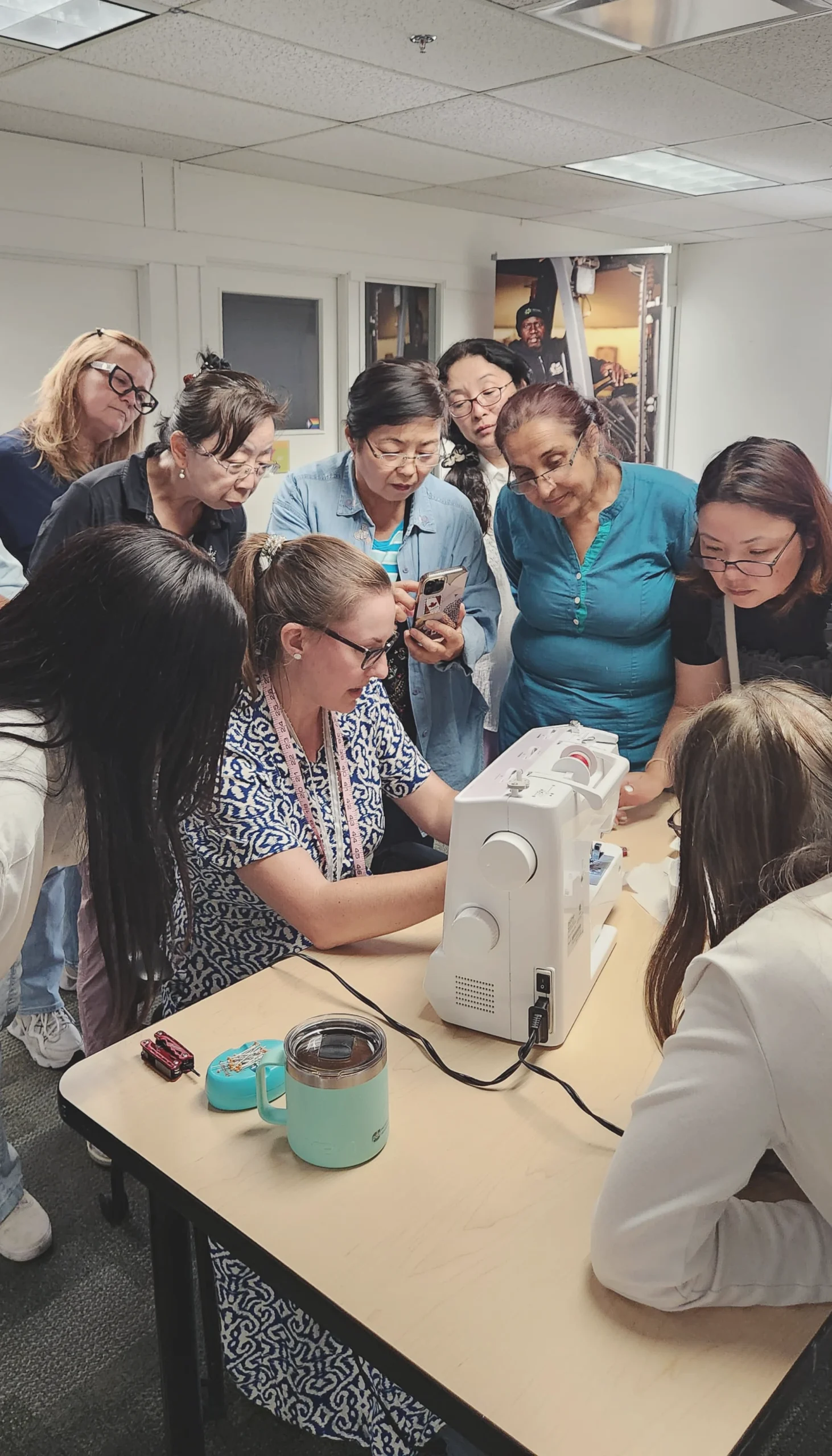Last year I taught sewing at the Inter-Cultural Association of Greater Victoria. It was a wonderful experience with a very engaged, enthusiastic and creative group! All the students were English language learners, and there were 5 different first languages represented in the class. With the exception of clumsily translating a few things to Spanish on the fly, like “coser en el cañon” (definitely incorrect but the student got the gist), I wasn’t able to communicate in any of the other languages.
We’re offering the class again this year, and expanding the program to include an advanced class as well. Space is limited so both classes are capped at 12 students but the courses have become very popular! This year 50 people tried to sign up for the 12 spots in the beginner class. This year we also have more time and resources, which has made a huge difference.
Here’s what’s working well so far:
Routine:
I maintain the same structure for each class, and write the outline and all the sewing samples on a whiteboard at the front of the room. As a hearing-impaired person I know how stressful it can be to try to piece information together from sentence fragments. Anything that can lighten that cognitive load is a relief. For that reason, I maintain the exact same structure for each class and outline everything clearly so that the students can focus their energies on improving their sewing rather than trying to piece together the lessons using context clues.
LOTS of visuals:
I bring completed sewing samples and demonstrate each sewing technique in class, but this year I also made step by step samples. For example: last year I had one sample of a flat-felled seam, then made another in a classroom demo. This year I have 4 pre-made samples for the flat-felled seam, one for each step. 1. Stitch wrong sides together 2. Trim the seam allowance on one side 3. Wrap the deeper seam allowance around the shallower side and press 4. Complete the top stitching. I also demonstrate the technique from start to finish in class.

Demonstrating French seams for ICA students
Intentional language teaching:
I teach vocabulary that’s relevant to the work. This year I had some lead time before the class started, and there was a budget for translation so I created an 11 page glossary of relevant sewing terms. I also wrote descriptions for each sewing sample. Those descriptions include the step-by-step process, the use cases for each technique, and a drawing of each technique.
I know that I use a lot of colloquial phrases, so when I was creating the glossary I asked my full-time diploma students to tell me the phrases I use over and over again. That was revealing! They came up with some good ones, and they thoroughly enjoyed roasting me for my nerdy phrases. Apparently I say “taking breaks prevents mistakes” , “you’ve got two curves that don’t want to get along” and “go slow and pin the heck out of it” for tricky sewing techniques. So in addition to all of the technical language, the glossary also contains a few of my go-to phrases.
Seating more advanced students next to newer students:
The students who speak the same languages tend to sit next to each other, so without breaking up those language groups, I tried to make sure that the more advanced student or students were seated at the center of those groups. It seems to have made both new and experienced students more independent and confident. Now the students ask each other the more straightforward questions and bring me the more complicated questions or the ones their peers are unable to answer, which has made class time much easier to manage. ICA is a warm, supportive, collaborative community, so giving the advanced students the opportunity to take on a slightly more instructive role, has been a natural fit for the culture of the organization!

